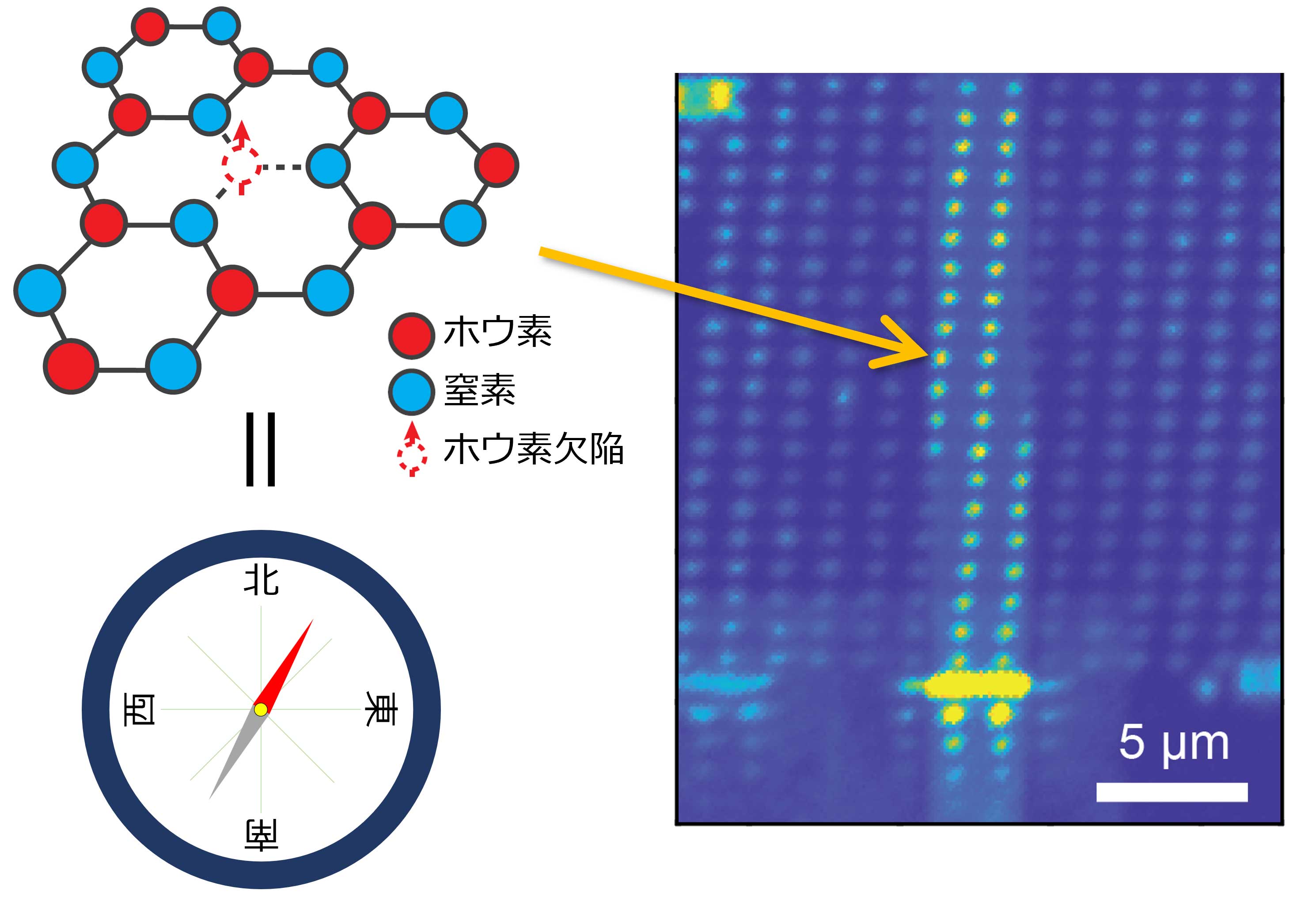Disclaimer: machine translated by DeepL which may contain errors.
Arrange quantum sensors at will!
Kento Sasaki (Assistant Professor, Department of Physics)
Kensuke Kobayashi (Professor, Department of Physics, Institute for Physics of Intelligence)
Quantum sensing is the precise measurement of physical quantities based on the principles of quantum mechanics.
A typical example is the measurement of crystal defects derived from impurities in transparent crystals using a quantum mechanical
A typical example is magnetic field measurement, in which impurity-derived crystal defects in transparent crystals are used as quantum mechanical measuring instruments (quantum sensors).
We have developed a technique to create quantum sensors at targeted locations in boron nitride crystals.
Using this technology, it is possible to measure small magnetic fields with a high spatial resolution of less than 1 μm.
This is a new technology that can be widely applied to research on magnets.
![]()
It is thanks to quantum mechanics that we are able to understand the properties of atoms, molecules, and materials made up of atoms and molecules. In recent years, research on quantum technology has been progressing to utilize quantum mechanics not only as a means of understanding but also as a technology. Quantum sensing is one such technology.
You may have heard of the pink diamond. The pink color is caused by nitrogen-derived crystal defects (NV centers) contained as impurities in diamond. The pink color is due to the presence of quantum mechanical energy levels in the diamond. In general, crystal defects with this unique color are called color centers.
Among the many color centers, the NV center can be used as a quantum sensor because of its special properties. When irradiated with green light, the amount of red emission depends on the magnetic field perceived by the NV center. Using this fact, the magnetic field can be determined precisely (e.g., easily to one-hundredth of the geomagnetic field). It is, so to speak, an ultra-precise directional magnetic needle on the size of an atom.
Although NV-centered quantum sensors have been studied over the past decade, there are challenges to their practical application. For accurate magnetic field measurement, the sensor needs to be as close as possible to the object to be measured, which is difficult to do with hard diamond. In addition, it is not easy to make a sensor in a targeted location or to make a small sensor. Recently, however, the situation has changed with the discovery that color centers called boron defects in transparent crystal hexagonal boron nitride (hBN) can be used as quantum sensors (Figure left). hBN is a van der Waals crystal and can be peeled off as thin as a few nm, making it easy to process. Therefore, the application of color-center quantum sensors is expected to expand dramatically.
We have developed a new technology to use hBN quantum sensors more conveniently. Specifically, we have succeeded in producing boron defects at a target location with nanometer precision by using a helium ion microscope that can bombard a material with a beam of helium ions. The figure on the right shows the luminescence image of the quantum sensor arrayed in the hBN crystal. Each spot is an aggregate of boron defects and has an area as small as that of an ion beam spot (100 nm). This technique can be used for magnetic field imaging with high spatial resolution. In fact, we have shown that spatial resolution beyond the diffraction limit can be obtained while using an optical microscope.
 (Left) Schematic of a hexagonal boron nitride crystal. The center of the image is the color center, and the electron spins in this area function as quantum sensors.
(Left) Schematic of a hexagonal boron nitride crystal. The center of the image is the color center, and the electron spins in this area function as quantum sensors.(Right) Quantum sensors arranged in a diagonal lattice in a crystal.
This research is creating a new direction in quantum sensing. Unlike diamond, hBN quantum sensors can be produced in large quantities at low cost in the form of microscopic flakes. If we can establish a general-purpose disposable quantum sensor for measuring magnetic fields based on this technology in the near future, it will be a good example of practical application of quantum technology. This is our hope.
The results of this research have been published in K. Sasaki et al. Lett., 122, 244003 (2023).
Published in Faculty of Science News, September 2023
Frontiers of Science for Undergraduates


